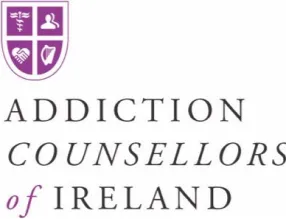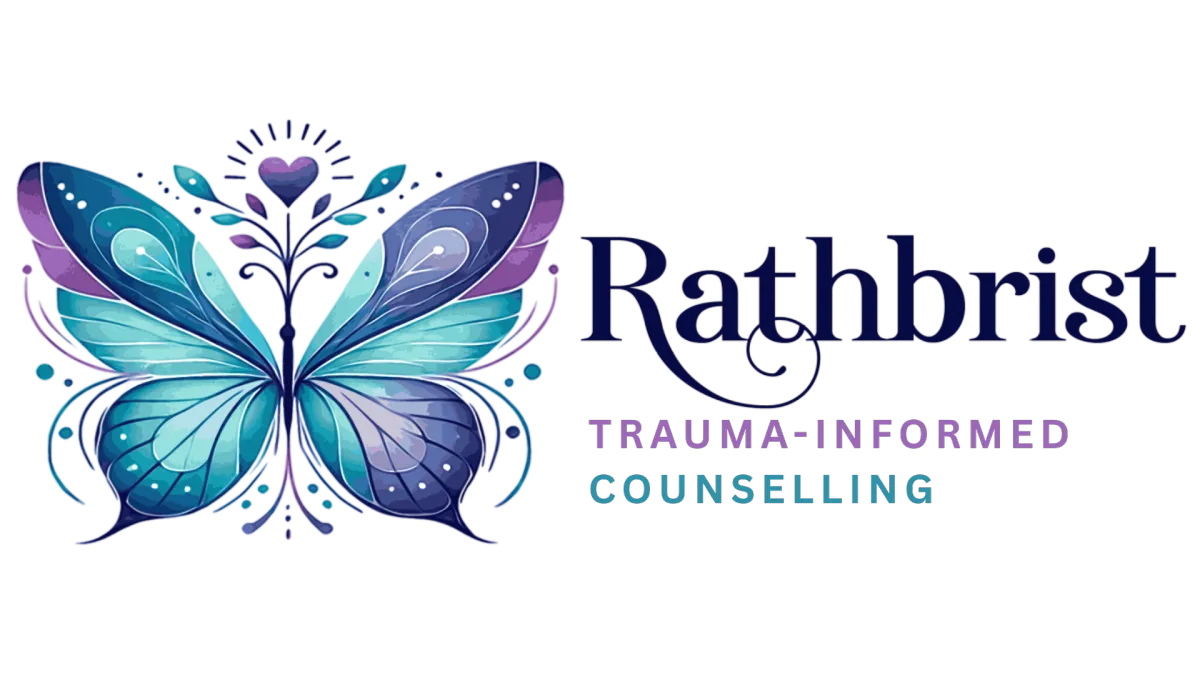My Therapeutic Approach
My approach is flexible, collaborative, and grounded in a deep understanding of trauma. I recognise that each person’s experiences, strengths, and needs are unique, so I draw from a range of evidence-informed practices to offer the right kind of support at the right time.
Whether working through the impacts of trauma, supporting recovery from addiction, or using principles from Dyadic Developmental Pschotherapy (DDP), my focus is always on building safety, trust, and connection. These are the foundations that allow for emotional regulation, healing, and lasting change.
By working together at your pace, we can explore what feels most helpful — empowering you to feel more resourced, understood, and in control of your own growth.

I take a trauma-informed approach, recognising that every individual is unique and benefits from support that’s tailored to their specific needs. I draw on a range of approaches and work collaboratively with each person to explore what feels most helpful in supporting their healing and personal growth.

What is a Timeline?
(Healing past wounds, reprocessing trauma, inner child work)
It helps clients explore past experiences, identify key moments of trauma or transformation, and reframe their narratives. By working through significant life events, clients can gain a deeper understanding of their emotional responses and find new ways to move forward.
Read More
A timeline is a visual tool that helps people map out significant life events in chronological order. It can be used to:
- Identify patterns and key turning points
- Increase self-awareness
- Explore the impact of trauma and developmental stages
- Build a coherent life narrative
- Track growth and healing over time
Benefits of Using a Timeline
- Helps clients externalise and make sense of their story
- Supports trauma processing safely and at the client’s pace
- Enhances the therapeutic alliance through collaborative exploration
- Can highlight resilience and coping strategies
- Useful in integrative, or trauma-informed approaches
How Timelines are Used in Practice
- Drawn or written on paper, digitally, or with creative materials
- Can include ages, dates, drawings, symbols, or emotions
- May be structured (e.g., birth-present) or focused on a particular theme (e.g., relationships, grief, addiction, or trauma)
- Reviewed gradually over sessions with space for reflection
Who Might Find Timelines Helpful?
- People who feel overwhelmed by their past or disconnected from parts of their story
- Clients with trauma, complex histories, or fragmented memories
- Adolescents and adults in long-term or short-term therapy
- Those who struggle to verbalise their experiences
What a client said:
Sue explained what a timeline was and asked if I was willing to try it. I was concerned at first because I’ve never been asked to look back at my childhood, never mind write it on paper. Using the timeline helped me understand that my life was not all bad, I think the bad overlooked the good. It helped me fully process life events that were making me turn to drugs. Now I am aware that none of the shame I carried was mine. Sue and I through a timeline discovered more than I ever would have believed.
Example Uses in my Practice
Sometimes, we use timelines to look at key experiences that shaped your life. This can help you understand patterns, notice your strengths, and gently process past pain in a way that feels safe and supported.


Cognitive Behavioural Therapy (CBT)
(Thoughts-feelings-behaviour cycle, challenging unhelpful beliefs, structured approach)
CBT is a goal-oriented that helps clients recognise and challenge negative thinking patterns that contribute to emotional distress. By developing healthier thought processes, clients can shift their behaviours and improve their overall well-being.
Read More
My Approach to CBT – Trauma-Informed, Collaborative, and Grounded in Lived Experience
I understand that healing is never one-size-fits-all. CBT can be incredibly helpful—but only when it’s adapted to honour the whole person and their unique story.
As someone with my own lived experience of trauma, I know that the journey through pain is never linear. I’ve sat in both chairs and I bring that understanding into every session.
I Work Gently, Not Rigidly
CBT often focuses on challenging thoughts and changing behaviour—but if you’re feeling overwhelmed, shut down, or stuck in survival mode, we won’t rush into that. First, we focus on building safety, connection, and trust. You deserve a space where you can just be, without pressure to “fix” anything right away.
Meets You Where You Are
Some clients find CBT too structured or overly focused on the mind. That’s okay. I adapt it using creative, body-based, and reflective tools. We might use visual timelines, metaphor, or grounding exercises—whatever helps you feel understood and empowered. This approach respects that trauma lives in the body as well as the mind.
You’re the Expert
My role is to walk beside you, not lead the way. We explore your experiences together and decide what feels helpful. I value collaboration, and I never assume what’s right for you based on a manual—I listen, adapt, and respond with care.
Someone Who Gets It
Because of my own journey, I work without judgment. I understand shame, dissociation, overwhelm, and survival strategies, because I’ve lived them too. This doesn’t mean it is about me, but it does mean you won’t have to explain everything from scratch. I get it in a way textbooks can’t teach.


Acceptance and Commitment Therapy (ACT)
(Psychological flexibility, mindfulness, values-driven action)
ACT encourages clients to accept difficult thoughts and emotions rather than trying to eliminate them. By fostering mindfulness and identifying core values, clients can take meaningful steps toward a fulfilling life despite life's challenges.
Read More
Acceptance and Commitment Therapy (ACT)
I believe that no single anything works for everyone. People are complex, and healing looks different for each of us. That’s why I draw from a variety of approaches, including Acceptance and Commitment Therapy (ACT), and tailor the work to suit you—your needs, your pace, your values.
What is ACT?
Acceptance and Commitment Therapy (ACT) is a powerful yet gentle approach that helps you:
Accept what’s outside of your control
Commit to actions that align with your values
Build a meaningful life, even in the presence of pain
Rather than trying to get rid of anxiety, trauma responses, or intrusive thoughts, ACT invites you to change how you relate to them, with compassion and curiosity. It helps you move away from avoidance and toward the life you truly want to live.
How ACT Fits Into My Work
I use ACT alongside other modalities, like CBT, inner child work, or somatic tools—depending on what feels right for you. ACT can be especially helpful when:
You feel stuck in patterns of avoidance or self-criticism
You want to explore your values and sense of purpose
You’re navigating trauma, grief, or change
You want to feel more present, grounded, and in charge of your choices
Blending ACT with a Trauma-Informed Lens
If you’ve experienced trauma, you may have learned to disconnect from painful emotions or memories just to survive. ACT honours that, and gently offers ways to reconnect with yourself, without pushing or retraumatising. Together, we explore how to make space for discomfort, stay grounded in the here-and-now, and move toward what really matters to you.

Compassion-Focused Therapy (CFT)
(Self-kindness, reducing shame, developing a compassionate mindset)
CFT helps clients cultivate self-compassion and break free from self-criticism and shame. This approach fosters emotional resilience by building a supportive inner dialogue and strengthening the capacity for self-soothing.
Read More
Compassion Focused Therapy (CFT)
Many people I work with struggle with deep feelings of shame, self-criticism, or the sense that they’re “not good enough.” CFT helps us gently turn toward those parts of ourselves with kindness rather than judgment.
CFT was developed for people who find it hard to feel safe, worthy, or self-accepting, especially those who’ve experienced trauma or grew up without emotional safety. It helps us develop inner resources to calm the nervous system, regulate emotions, and relate to ourselves with care.
The Three Emotional Systems
CFT helps us understand how our brain and body respond to threat. We all have three core systems:
Threat System – for detecting danger (often overactive in trauma)
Drive System – for achievement and reward
Soothing System – for calm, connection, and compassion (often underdeveloped)
When the soothing system is strengthened, we can respond to pain or criticism without collapsing into shame or lashing out in defense.
What We Do in CFT
Learn how your inner critic formed and how it tries to “protect” you
Build emotional safety using grounding, imagery, and compassion-focused exercises
Develop a compassionate inner voice—one that understands your pain without adding to it
Connect with your values, strengths, and resilience
How I Use CFT in My Work
I integrate CFT into my practice, especially when working with clients who carry shame from past abuse, neglect, or trauma. This might involve:
Exploring the roots of self-criticism and perfectionism
Using imagery to create a safe, compassionate inner guide
Slowing down the pace to offer warmth and regulation
Practising self-compassion skills together, one gentle step at a time
I understand how hard it can be to feel kindness toward yourself when you’ve carried blame, guilt, or shame for too long. You don’t have to force it. Compassion can be learned, and it can change everything.

Motivational Interviewing (MI)
Empowerment, exploring ambivalence, building motivation for change
MI is a client-centered approach that supports individuals in exploring their readiness for change. Through open-ended questions, reflective listening, and affirmations, clients are empowered to make positive changes in their lives at their own pace.
Read More
Motivational Interviewing (MI) is a gentle, respectful way of helping you explore and strengthen your own motivation for change.
Rather than pushing or advising, MI creates space for “you” to talk, reflect, and decide what feels right for you—at your pace, In your way. It’s especially helpful when you feel stuck, uncertain, or ambivalent about change.
How MI Can Help
We all struggle with change sometimes. A part of you might want to do something differently, while another part feels scared, tired, or unsure. That’s normal—and MI can help you work with those parts instead of against them.
Through open conversation, we explore:
- What’s important to you
- What’s getting in the way
- Your hopes, fears, and doubts
- What small steps might feel possible
What It’s Like in a Session
You won’t be judged, diagnosed, or pressured. Instead, I’ll listen deeply and ask curious, open-ended questions to help you connect with your own inner wisdom.
We might explore:
- “What’s been making this hard for you?”
- “What would feel like a good first step?”
- “What matters most to you right now?”
It’s not about pushing you to change. It’s about helping you feel heard, valued, and supported—so you can choose what feels right for you.

Polyvagal-Informed Therapy
(Nervous system regulation, safety and connection, trauma healing)
Grounded in Polyvagal Theory, this approach helps clients understand their nervous system's response to stress and trauma. By fostering safety and co-regulation, clients can develop greater emotional stability and resilience.
Read More
Listening to the Nervous System with Compassion
Have you ever felt overwhelmed for “no reason,” shut down in conversation, or like your body is reacting before your mind can catch up?
That’s not weakness, it’s your “nervous system” trying to protect you.
It helps you understand these automatic reactions and work with your body, not against it. Based on Dr. Stephen Porges’
Polyvagal Theory, this approach explores how safety, connection, and survival are deeply wired into your biology.
The Three States of the Nervous System
We gently explore how your body moves through different states:
- Fight or Flight (Sympathetic): You may feel anxious, agitated, angry, or restless.
- Shut Down (Dorsal Vagal): You might go numb, dissociate, withdraw, or feel hopeless.
- Safe and Connected (Ventral Vagal):You feel calm, grounded, and open to others.
These shifts happen automatically, especially in people who have lived through trauma, neglect, or chronic stress. You’re not broken. You’re adapting.
How We Work with the Nervous System
In sessions, we tune into your body’s signals with care. You’ll learn how to:
- Notice your nervous system states with curiosity, not shame
- Find resources to return to safety and regulation
- Strengthen your “ventral vagal” state, where healing happens
- Rebuild trust in your body, your relationships, and yourself
We might use grounding tools, breathwork, movement, imagery, or gentle co-regulation—depending on what feels safe and useful for you.
A Body-Aware, Compassionate Approach
This approach can be especially supportive if:
- You’ve experienced trauma or abuse
- You struggle with anxiety, shutdown, or dissociation
- You want to feel more connected, to yourself and others
- Talking alone hasn’t felt “enough”

Attachment-Based Therapy (Polyvagal-Informed Therapy)
(Early relationships, secure connections, emotional regulation)
This approach explores how early attachment experiences shape present-day relationships and self-perception. By addressing attachment wounds, clients can develop healthier connections with themselves and others.
Read More
Healing Through Safe Relationships
Our earliest relationships, especially with caregivers, shape how we learn to connect, trust, and feel safe with others. When those early bonds are secure, we grow up feeling loved, seen, and worthy. But when they’re disrupted by trauma, neglect, abuse, or inconsistency, they can leave deep emotional wounds.
Attachment-based therapy focuses on healing those early relational experiences and creating new, safe patterns of connection in the present.
What Is Attachment-Based Therapy?
It is a gentle, relational approach that helps you:
Understand how early relationships shaped your sense of self and others
Explore patterns like people-pleasing, avoidance, or fear of abandonment
Build safe, secure relationships
Reconnect with your true self, beyond the roles you had to play to survive
It’s not about blaming the past but about understanding how it lives in the present and creating space for new ways of relating, feeling, and healing.
We offer a safe, consistent, non-judgmental space where you can explore trust, vulnerability, and emotional connection at your pace.
We might:
Gently explore your relationship patterns and where they began.
Work with your inner child or younger parts of you who still carry fear, shame, or unmet needs.
Use grounding tools to stay regulated while connecting emotionally
Build a secure relational experience in the room—where you’re met with empathy, respect, and care
For Those Who’ve Been Let Down By Relationships
If you’ve been hurt, rejected, or abandoned by the people who were supposed to care for you, it makes sense that trust feels hard. It honours that pain, and offers a different kind of experience. One where you’re not alone, and healing happens through connection, not pressure.

What are the six key principles of a trauma-informed approach?
The HSE and NHS defines trauma-informed practice as an approach that recognises how trauma impacts neurological, psychological, and social development. Organisations must be sensitive to trauma survivors’ needs and avoid re-traumatisation.
Principles of Trauma-Informed Practice - Creating Safety. Honouring Experience. Supporting Healing.
Trauma-Informed Practice isn’t a technique—it’s a way of “being” in relationship with others that recognises how trauma impacts the body, mind, and nervous system.
Whether trauma comes from abuse, neglect, loss, discrimination, or living in survival mode for too long—it can affect how we feel, think, trust, and relate. Trauma-informed therapy creates a space where those responses are understood, not judged.
Here are the core principles that guide my trauma-informed work:
Safety
Ensuring physical and emotional safety by:
Creating a safe environment for people.
Preventing re-traumatisation through policies and safeguards.
Physical, emotional, and psychological safety are essential.
In therapy, we go at “your” pace. Nothing is forced. You are in control of what you share and when. The space is gentle, consistent, and supportive.
Trustworthiness and Transparency
Building trust through:
Transparent communication of policies.
Following through on commitments.
You deserve honesty, consistency, and clear communication.
I’ll always explain what we’re doing and why. There are no surprises, and your consent matters every step of the way.
Collaboration and Choice
Supporting people or individuals in decision-making by:
Encouraging shared goal setting.
Respecting individual needs and control.
We work together. You’re the expert on your life.
I’ll offer options, and we decide together what feels helpful. There’s no pressure—only partnership.
Understanding Trauma Responses
Instead of asking, “What’s wrong with you?”
We ask, “What happened to you?” and “What helped you survive?”
Your responses, like shutting down, avoiding, people-pleasing, or reacting quickly, make sense in the context of what you’ve lived through.
Empowerment
Fostering confidence by:
Listening and validating concerns.
Encouraging autonomy and self-worth.
It is a core principle of trauma-informed care that focuses on supporting individuals to reclaim their voice, autonomy, and inner strength. It recognises that trauma often involves a loss of control, and healing requires restoring a sense of choice and self-trust. In practice, empowerment means working collaboratively, honouring each person’s lived experience, and highlighting their resilience—not just their pain.
Cultural Consideration
Providing inclusive care by:
Addressing cultural needs and biases.
Offering gender-responsive and culturally sensitive services.
Everyone’s story is shaped by their background, identity, and lived experience.
I strive to create a space that is inclusive, respectful, and open. I don’t assume—I listen, I learn, and I honour your unique perspective.











